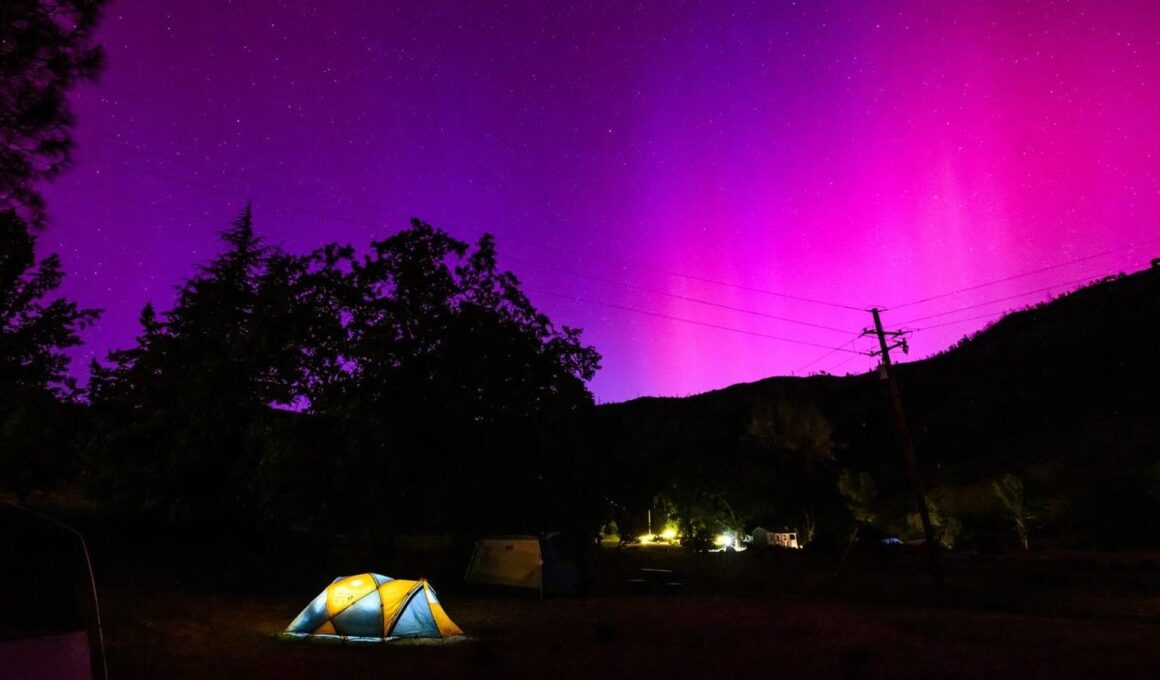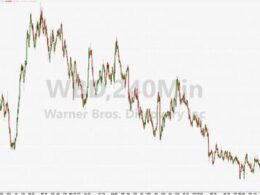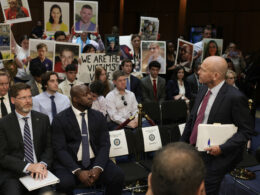Topline
A number of northern states in the U.S. may have the chance to see the northern lights and the Perseid meteor shower Sunday night into Monday morning amid increased geomagnetic activity.
Northern parts of Idaho, Michigan and New York may be able to see the northern lights Sunday night … [+]
Key Facts
The aurora borealis forecast for Sunday night into Monday morning has a Kp index range of 3.33 and 5.67, meaning the lights are expected to become brighter and “be quite pleasing to look at” if you are in the right place, according to the National Oceanic and Atmospheric Administration.
A geomagnetic storm watch is in place through Sunday following an eruption of solar material on Wednesday and Thursday, meaning people in some northern and upper Midwest states—from New York to Idaho—may be able to see the lights.
The lights may be visible alongside the Perseid meteor shower, which is expected to peak between Sunday night and Monday morning, as well.
Get Forbes Breaking News Text Alerts: We’re launching text message alerts so you’ll always know the biggest stories shaping the day’s headlines. Text “Alerts” to (201) 335-0739 or sign up here.
What States Will The Northern Lights Be Visible From?
NOAA predicted the northern lights may be visible from Washington, northern Idaho, Montana, North Dakota, South Dakota, Minnesota, Wisconsin, Michigan, northern New York and northern Maine.
Sunday’s viewing regions.
What’s The Best Way To See The Northern Lights?
NOAA recommends ensuring you are away from city lights in as dark a viewing place as possible and going out to view between 10 p.m. and 2 a.m. local time to see the aurora best.
Key Background
The northern lights have been more visible in the U.S. since May due to very active sunspots NOAA has designated as NOAA Active Region 13664. The sunspots led to solar flares and coronal mass ejections in May that produced the strongest geomagnetic storm conditions since the Halloween Solar Storms of 2003. The sun’s 11-year solar cycle is also approaching a peak that forecasters expect to come late this year and in early 2026, and NOAA has predicted there could be as many as 115 sunspots during the peak. The sun’s activity has been more active than anticipated ahead of the peak, meaning there could be even more geomagnetic storms before the peak, though it’s unclear exactly when they might occur.
Tangent
NOAA predicted the Perseid meteor shower—one of the most anticipated meteor showers of the year—would peak this weekend and could have more than 50 meteors per hour. The best time to view the shower is after midnight, according to the American Meteor Society. The shower runs from July 14 to Sept. 1, though, so there may be more chances to see meteors.
Further Reading
Israel and Hamas. Previously, she has covered a range of topics from Donald Trump’s legal battles to Taylor Swift’s path to becoming a billionaire. She joined Forbes in April 2022 and is based in Colorado. Prior to joining Forbes, Bohannon covered local news and spent time at the Fort Collins Coloradoan and the Arizona Republic. She graduated with a degree in journalism from Creighton University and has an MA in investigative journalism from Arizona State. Follow Bohannon for continued coverage of pop culture, politics and updates on the war in Gaza.
“>








